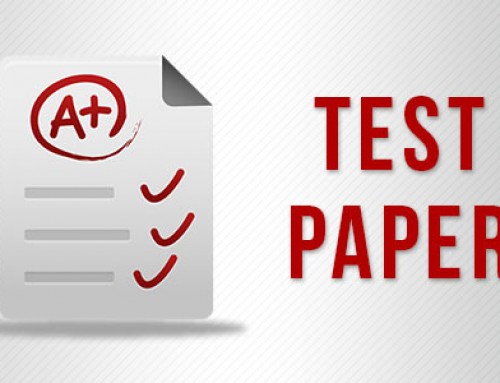Work, power and energy.
Now there should be no disturbance and no one talking.
WPE, okay. Till now we were solving physics problem with force analysis. First we
studied Kinematics and then we studied Newton’s Law of Motion on frictions. What
we were doing, we used to draw free body diagram and then we use to see forces
and then which way the resultant force is generated, there we assumed
acceleration. And then used equation of f is equal to ma motion in various situations,
okay. This was something which we have already done.
Now onwards we will see the physics problems can also be analysed by using the
idea of energy. Now, same problems of physics which you have studied till now in
NLM and kinematics, all those problems will be solved by energy analysis. But we will
learn this slowly, slowly. If we study everything philosophically, you won’t be able to
understand. We will talk to the point, write the heading – Kinetic Energy.
Kinetic Energy, energy due to the motion of the particle is known as its kinetic
energy. Energy due to motion of the particle is known as the kinetic energy. Kinetic
energy is written as half m v square, we can also write like that. What is P – Linear
momentum. So the same kinetic energy formula can also be written as P square by
2m. Multiply m on both the sides, there it will come as m square and P square. Then
it will become P square, okay. How this is done? Kinetic energy is all type of scalar
quantities, it has no directions, obviously if it is scalar quantity it should not have any
particular direction. Unit of energy is Joule represented by capital J. 1 J is equal to
Newton into meter, okay. Now, see this is all about kinetic energy, 99% will be done
with this particular idea. You should remember it, anyway you will remember it
automatically. If anything, now what examiner will do? Now, kinetic energy is there,
when he will discuss kinetic energy, he will ask questions whatever you have learned
related to velocity. Till now, we had studied in kinematic many things related to
speed and velocity. Many ideas related to speed apart from directions, whatever
ideas you have discussed in terms of magnitude, the examiner will use that and ask
questions on kinetic energy.
First example, find the kinetic energy of a particle. If mass is in kg and velocity is
meter per second then your kinetic energy will be in Joule, be careful with that. If
mass is not in kg, then we have to convert it into kg, we should be very careful about
unit. If mass is in kg and velocity is in meter per second, then the kinetic energy will
be in Joule. Find your kinetic energy. I think, we can go through half m into V square.
V square can be written as V dot V, so effectively, what I am doing? I am making the
dot product of V, velocity vector with itself. Now, 14 Joule is the kinetic energy,
everyone is fine, done.
Then next question, three particles are moving in a straight line. Three particles are
moving in straight line. Their x co-ordinates varies with time, where x co-ordinates
varies with time, then write the order of their kinetic energy, write the order of their
kinetic energy, where t is equal to t naught. T is equal to t naught.
Three particles of identical masses, this is what I said. I mentioned that the masses
are same? Masses are same. Did I say identical particles? I had not said that it is
identical? Three identical particles are moving in straight line and their position
varies with time according to this graphs, these graphs, this is 1. See, here I want to
recall a small idea. If position time graph is given, so how we were commenting on
the velocity? Slope of the tangent. So, I have to write velocity for first particle, write
velocity for second and also have to write velocity for third. So, we can see clearly,
the slope of the tangent for 1 is highest, then for second and then for third. Whose
slope is highest, its velocity will also be highest. I can say, V1 is greater than V2 is
greater than V3, so kinetic energy is greater than 1, 2, and 3. Done, any doubt, next
question.
Draw the graph between kinetic energy and velocity and kinetic energy into square
of velocity. Class, we know the kinetic energy is half m v square and if I draw the
between kinetic energy and velocity, so, we are making graph of power 1 and power
2. How will the graph be – Parabolic. So when velocity is zero so kinetic energy is
zero, so it will be upward opening parabola, you remember, we had discussed in the
graph. And if we are making graph with v square, then it will be a graph of power 1
and power 1. V square will be treated as a quantity, what type of graph it will be? It
will be a straight line, done. If velocity is negative and speed is negative, you are
telling the truth, it can be done this side also. Kinetic energy will be positive, velocity
can be negative also, okay. But, generally, here kinetic energy, suppose if we are
discussing this for speed. So in the speed graph we will ignore this side, because,
obviously speed will never be negative. For most of the cases they will ask you
kinetic energy versus speed graph.






